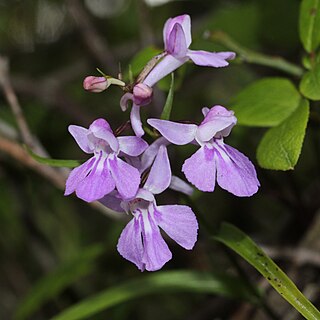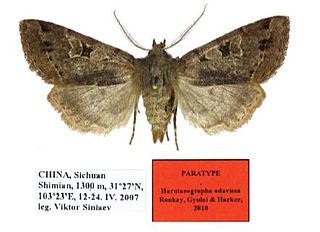
Sichuan is a province in Southwestern China occupying the Sichuan Basin and Tibetan Plateau between the Jinsha River on the west, the Daba Mountains in the north and the Yungui Plateau to the south. Sichuan's capital city is Chengdu; its population stands at 83 million. Sichuan neighbors Qinghai to the northwest, Gansu to the north, Shaanxi to the northeast, Chongqing to the east, Guizhou to the southeast, Yunnan to the south, and Tibet to the west.

Chengdu is the capital city of the Chinese province of Sichuan. With a population of 20,937,757 at the 2020 Census, it is the fourth most populous city in China, and it is the only city with a population of over 20 million apart from direct-administered municipalities. It is traditionally the hub of Western China.

Mount Qingcheng is a sacred Taoist mountain in Dujiangyan, Chengdu, Sichuan, China.

Luzhou (simplified Chinese: 泸州; traditional Chinese: 瀘州; pinyin: Lúzhōu; Sichuanese Pinyin: Nu2zou1; Luzhou dialect: ), formerly transliterated as Lu-chou or Luchow, is a prefecture-level city located in the southeast of Sichuan Province, China. It is also known as the "Liquor City" (酒城). It was named Jiangyang (simplified Chinese: 江阳; traditional Chinese: 江陽; pinyin: Jiāngyáng) until the Northern and Southern dynasties. Situated at the confluence of the Tuo River and the Yangtze River, Luzhou has been Sichuan province's largest port in both size and output since Chongqing's separation from Sichuan in 1997. As of the 2020 Chinese census, its population was 4,254,149. Of these, 1,241,273 lived in the built-up (or metro) area made of Jiangyang and Longmatan districts, as Naxi district is not conurbated yet. Luzhou borders Yunnan, Guizhou and Chongqing provinces. As the only geographic junction of the four provinces, it was an important port location in ancient China. After the PRC was founded in 1949, Luzhou became the capital of southern Sichuan province. In 1983, Luzhou was upgraded to prefecture-level city status.

Omeisaurus is a genus of sauropod dinosaur from the Middle Jurassic Period of what is now China. Its name comes from Mount Emei, where it was discovered in the lower Shaximiao Formation of Sichuan Province.

The Chengdu Metro is the rapid transit system of Chengdu, the capital of Sichuan, China. With the opening of Line 1 on 27 September 2010, the system consists of 13 subway lines and 1 light rail line. It has subsequently undergone rapid expansion. Since the opening of Lines 6, 8, 9, and 17 on 18 December 2020, the Chengdu Metro is the 4th longest metro system in the world.

Abies fabri is a conifer species in the family Pinaceae. It is endemic to Sichuan in western China, occurring on the sacred mountain of Emei Shan and westward to the Gongga Shan massif, growing at altitudes of 1,500–4,000 metres (4,900–13,100 ft).

Herminium is a genus of plants in family Orchidaceae, widespread across much of Europe and Asia.
The Longmen Mountains, also tautologically referred to in English-language publications as the Longmenshan Mountains, are a mountain range in Sichuan province in southwestern China.

Ponerorchis is a genus of Asian terrestrial tuberous orchids. It is native to temperate Eurasia, from Poland to Japan, to the north of the Indian subcontinent and to northern Indochina.

The Chengdu–Dujiangyan intercity railway is a dual-track, electrified, passenger-dedicated, higher-speed rail line in Sichuan Province, connecting the provincial capital, Chengdu with the satellite city of Dujiangyan. The line is 65 kilometres (40 mi) in length with 15 stations. China Railways CRH1 train set on the line reach a maximum speed of 220 kilometres per hour (140 mph) and make the full-trip in 30 minutes, before 2018. The line was built in 18 months and entered into operation on May 12, 2010. The railway is built to withstand an 8.0-magnitude earthquake. The Chengdu–Dujiangyan intercity railway has two branch lines: Pengzhou Branch line is 21.2 kilometres (13.2 mi) in length with 6 stations, and Lidui Branch line is 6 kilometres (3.7 mi) in length with 3 stations. In 2019, China Railways CRH6A-A (Tianfu) train sets on the line started to operate up to 200 kilometres per hour (120 mph).

Chengdu railway station is a major railway station in Chengdu, the capital of Sichuan province. The station is located on North Second Ring Road, Jinniu District, to the North of the city centre. It is operated by China Railway Chengdu Group and is one of the most important hubs of the railway network in China.

Harutaeographa odavissa is a moth of the family Noctuidae. It is found in China.

Chengdu-Guiyang high-speed railway is a major trunk high-speed railway between the provincial capitals of Chengdu, Sichuan and Guiyang, Guizhou via a small section traversing north east Yunnan province. It was selected for construction under the 11th Five Year Plan set by the Chinese Government. Construction started in 2010 and was expected to be completed by 2014. The northern section of this line between Chengdu and Leshan forms the southern part of the operational Chengdu–Mianyang–Leshan intercity railway.

Dazhou–Chengdu Railway or Dacheng Railway, is a double-track, electrified railroad in Sichuan Province of southwest China. The railway is named after its two terminal cities Chengdu and Dazhou. The line has a total length of 403 km (250 mi) and opened in 1997. Other cities and towns along the route include Suining and Nanchong. The line is owned and operated by the Dacheng Railway Company Limited, a 70-30 joint venture between the Ministry of Railways and Sichuan Provincial Government.
The COVID-19 pandemic reached the province of Sichuan, People's Republic of China on 20 January 2020, with its first case confirmed on the next day.

Huang Runqiu is a Chinese geologist and politician currently serving as Minister of Ecology and Environment. He is a member of the Jiusan Society and the third minister from a non-Communist party since the reform and opening-up in late 1970s.
Erythrotes is a genus of beetles in the family Cerambycidae, containing one species from China, Erythrotes murzini. It was described by Lazarev in 2020. It is endemic to the Sichuan Province in China. "Erythrotes" is derived from the Greek noun ερυθρότης (redness), referring to the red color of the body of the species.
Dorcadion (Cribridorcadion) paramicans keskiense is a species of beetle in the family Cerambycidae. It was described by Lazarev in 2016. It is known from Turkey.
Dorcadion (Cribridorcadion) paramicans kalechikense is a species of beetle in the family Cerambycidae. It was described by Lazarev in 2016. It is known from Turkey.














